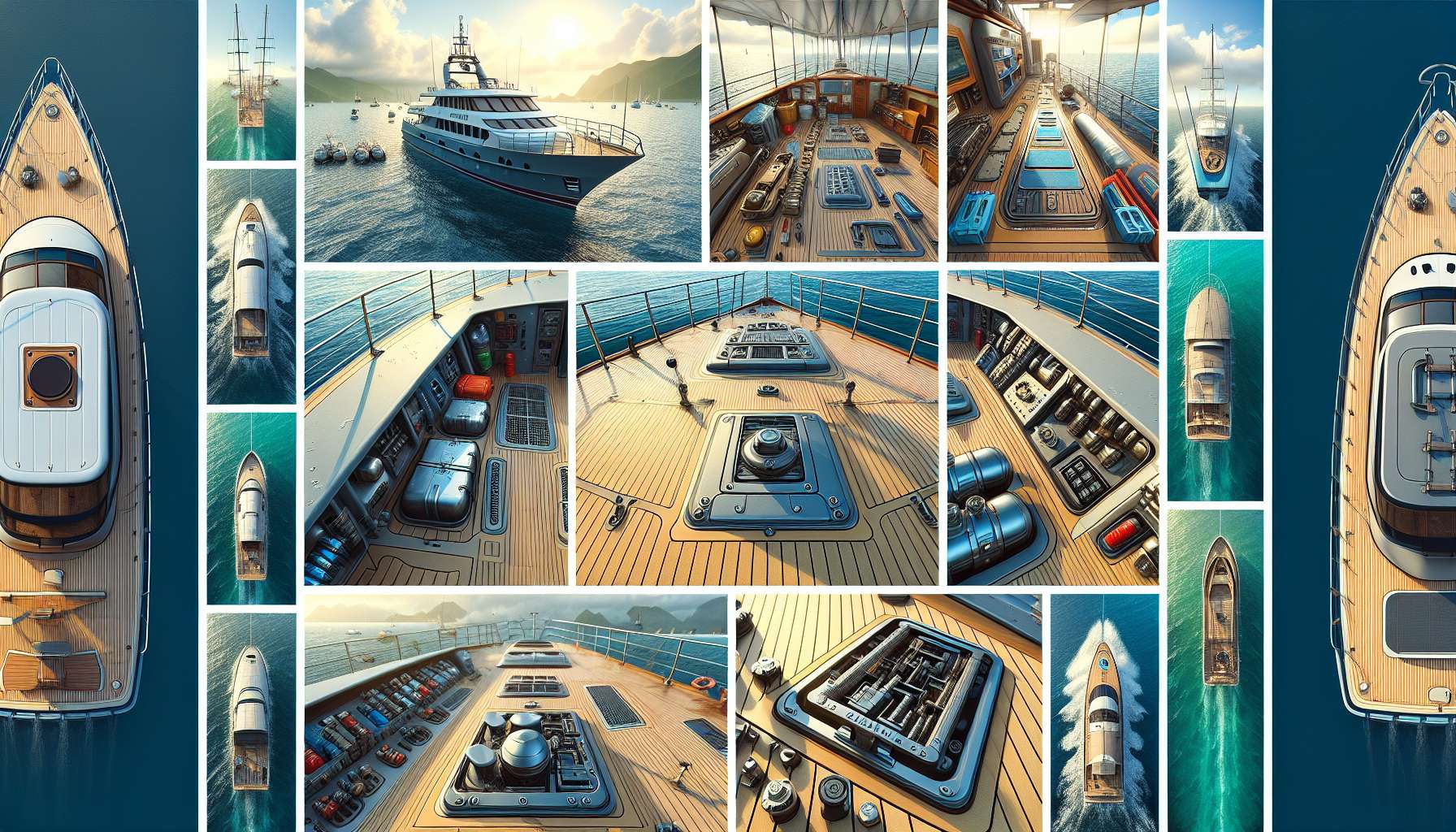Sailboat Rigging: Navigating the Essentials
Picture this: the gentle sway of the boat, the crisp smell of the sea, the wind in your sails – sailing is an experience unlike any other. At the heart of every sailboat lies its rigging, a complex system of ropes, wires, and hardware that keeps the mast upright and the sails in place. From centuries-old sailing traditions to modern advancements in technology, sailboat rigging plays a vital role in the performance and safety of every seafaring vessel. Let’s dive deep into the world of sailboat rigging, exploring its intricacies, history, and importance.
The Evolution of Sailboat Rigging
Since ancient times, sailboat rigging has been a fundamental aspect of sailing. Early sailors used natural fibers like hemp and sisal to create ropes and rigging for their vessels. As sailing technology advanced, so did the materials used in rigging. Today, sailboat rigging is typically made from materials such as stainless steel, synthetic fibers like Dyneema, and high-tech composites.
One of the key advancements in sailboat rigging was the invention of wire rigging in the 19th century. Wire rigging provided increased strength and durability, allowing sailors to navigate rough waters with greater confidence. Over time, innovations in materials and design have led to more efficient and reliable rigging systems, enhancing the performance of sailboats across the globe.

The Components of Sailboat Rigging
Understanding the components of sailboat rigging is essential for any sailor. The rigging system of a sailboat consists of various parts, each serving a specific function in keeping the mast upright and controlling the sails. Some of the key components of sailboat rigging include:
- Standing Rigging: The standing rigging of a sailboat comprises the wires, rods, or cables that support the mast vertically. This includes shrouds, backstays, and forestays, which help distribute the forces exerted on the mast while sailing.
- Running Rigging: The running rigging of a sailboat consists of the ropes and lines used to control the sails. This includes halyards, sheets, and control lines, which are essential for adjusting the position and tension of the sails while underway.
- Turnbuckles and Terminals: Turnbuckles are devices used to adjust the tension in the rigging wires, while terminals are fittings used to secure the rigging to the boat and mast. Properly tensioned rigging is crucial for the stability and performance of a sailboat.
By understanding the function and importance of each component, sailors can ensure that their rigging is properly maintained and optimized for sailing conditions.
Types of Sailboat Rigging
There are several types of rigging systems used on sailboats, each with its own advantages and characteristics. Some of the common types of sailboat rigging include:
- Wire Rigging: Wire rigging is a traditional choice for sailboat rigging, known for its strength and durability. Stainless steel wire is commonly used for standing rigging, providing excellent resistance to corrosion and wear.
- Composite Rigging: Composite rigging is a modern alternative to traditional wire rigging, made from high-tech materials like carbon fiber and Kevlar. Composite rigging offers significant weight savings and increased performance compared to wire rigging.
- Running Rigging: Running rigging consists of ropes and lines used to control the sails. Materials like polyester, Dyneema, and Vectran are commonly used for running rigging due to their strength and low stretch characteristics.
Choosing the right type of rigging for a sailboat depends on factors such as the size of the boat, sailing conditions, and performance requirements. Sailors should carefully consider their rigging options to ensure optimal performance and safety on the water.
Rigging Maintenance and Safety
Proper maintenance of sailboat rigging is essential for the safety and performance of a vessel. Regular inspections of the rigging system can help identify wear and damage before they lead to serious issues while sailing. Some key maintenance practices for sailboat rigging include:
- Inspecting rigging for signs of wear, corrosion, or damage
- Checking turnbuckles and terminals for proper tension
- Replacing worn or damaged rigging components as needed
- Ensuring that rigging is properly tensioned and adjusted for sailing conditions
By following these maintenance practices, sailors can prolong the life of their rigging and ensure safe and reliable performance on the water. Safety should always be a top priority when sailing, and well-maintained rigging is crucial for a successful and enjoyable sailing experience.
Future Trends in Sailboat Rigging
As technology continues to advance, the world of sailboat rigging is evolving to meet the demands of modern sailors. Innovations in materials, design, and manufacturing processes are shaping the future of sailboat rigging, with an emphasis on performance, sustainability, and efficiency.
One of the emerging trends in sailboat rigging is the use of sustainable and environmentally friendly materials. Sailors are increasingly seeking rigging options that minimize their impact on the environment, such as biodegradable ropes and recycled composites. These eco-friendly alternatives offer a greener solution for sailboat rigging while maintaining the strength and durability required for sailing.
Another trend in sailboat rigging is the integration of digital technology and smart systems. Sensors, monitors, and data analytics are being used to optimize rigging performance, monitor stress levels, and prevent rigging failures. These advancements in digital rigging technology are revolutionizing the way sailors manage and maintain their rigging systems, enhancing safety and efficiency on the water.
Expert Opinions on Sailboat Rigging
We reached out to renowned sailing experts and rigging specialists to gather their insights on sailboat rigging. According to Captain John Smith, a seasoned sailor with over 30 years of experience, “Proper rigging is the backbone of every sailboat. It’s essential to invest in high-quality materials and regular maintenance to ensure the safety and performance of your vessel.” Smith emphasizes the importance of rigging in sailing and encourages sailors to prioritize rigging maintenance for a smooth sailing experience.
Dr. Emily Jones, a marine biologist and sailing enthusiast, shares her perspective on the environmental impact of sailboat rigging. “As sailors, we have a responsibility to minimize our environmental footprint. Choosing sustainable rigging materials and practicing eco-friendly maintenance can help protect our oceans and marine ecosystems for future generations.” Jones advocates for sustainable practices in sailboat rigging to promote environmental stewardship among sailors.
Common Misconceptions About Sailboat Rigging
Despite its importance, sailboat rigging is often misunderstood by novice sailors and boating enthusiasts. One common misconception is that rigging maintenance is a one-time task, rather than an ongoing process. In reality, rigging requires regular inspections and adjustments to ensure safe and reliable performance on the water.
Another misconception about sailboat rigging is that all rigging components are interchangeable. In fact, each rigging component serves a specific function and must be properly matched to the size and requirements of the sailboat. Using the wrong rigging components can compromise the safety and stability of the vessel, leading to potential rigging failures.
Conclusion: Setting Sail into the Future
As we navigate the vast seas of sailboat rigging, one thing is clear: the world of sailing is constantly evolving. From ancient traditions to cutting-edge technologies, sailboat rigging remains a cornerstone of the sailing experience. By understanding the intricacies of rigging, sailors can enhance their performance, safety, and enjoyment on the water.
Whether you’re a seasoned sailor or a first-time boater, sailboat rigging is a fascinating and essential aspect of the sailing world. By exploring the history, components, types, maintenance, and future trends of sailboat rigging, we gain a deeper appreciation for the craftsmanship and innovation that goes into every sailboat.
So, as you set sail into the horizon, remember the importance of proper rigging, the beauty of the sea, and the thrill of the wind in your sails. Bon voyage!




